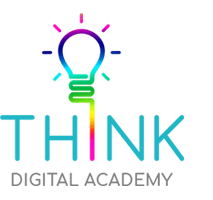Written by Kristal Williams
Each of us has a differing learning style. Einstein once said, “Everybody is a genius. But if you judge a fish by its ability to climb a tree, it will live its whole life believing it is stupid.” This has never been truer than it is today. We face a world where varying learning challenges cause many students to seek alternatives to conventional learning and as a result, feel inadequate.
Many parents, teachers and learning coaches wonder if there are other holistic teaching methods which can assist their students to obtain good results and still thrive. Perhaps the question we should all be asking is; “ Why not start exploring methods that meet our children where they are?” There are three methods which were specifically founded to address the four learning styles. Those methods are known as Kolb’s learning method; Dunn & Dunn; and Fleming & Mill’s VARK method. Our topic for investigation today will be on the VARK method.
The VARK Method
There are four different methods used by VARK to address the different learning types. These learning styles are collectively called “VARK” and represent the four different learning styles: visual (or spatial), auditory (or verbal), reading & writing and kinaesthetic (or tactile). This method was established by Neil Fleming in 1987.
Visual or Spatial
Visual learners have a tendency to follow instructions. These students have natural balance and alignment. They are very good organisers and are able to note even the slightest difference in people and objects. These students also have the ability to envision imagery very easily and thus are able to envision passages in a book very easily.
In order to help these learners with their learning, try looking at highlighting important words in colour or perhaps examining headings and pictures before going through the text. These learners need to be in a position where they are able to see their teacher at all times when in a brick and mortar classroom. These learners should also take their own notes.
Auditory or Aural
Auditory learners recall information that is spoken to them, such as instructions or passages in a book that are read aloud. They have good articulating skills, which are also accompanied by strong listening skills. They excel at oral exams and do best while reading aloud.
They benefit from group discussions and, if you play background music, you will help them to concentrate better. However, background noises tend to distract them, so try to limit that kind of noise. These learners will often ask for verbal instructions and work best when given these kinds of instructions.
Kinaesthetic or Tactile
Learners who are kinaesthetic have to be kept busy in order to facilitate their learning. This is achieved by engaging them in physical activities as opposed to a simple lecture or demonstration. They require a hands-on experience such as experimenting or testing, trial and error. This kind of learning could be excursions or simply leaving the classroom. They enjoy building things and working with their hands and thus would love to create things.
Allow a kinaesthetic learner to participate in physical activities, and allow them to express themselves in order to engage in their lessons. Activities such as class games or even treasure hunts are other means by which you can engage these learners in their lessons. Give them tactile stimulation with objects such as pipe cleaners, slime and playdough. They are also better at sign language than most learners because of their extremely expressive nature.
Reading & Writing
This specific branch of VARK is thought to be a sub-type of Visual learning. This learner understands concepts better when they write their lessons down or read them. This is because they absorb more information through words. They do very well with text-based assignments as well as written quizzes or otherwise written assignments. When this learner is working with charts or diagrams, let them write them out as words as they absorb text better than they do images. These learners find that writing, reading articles and taking notes are very helpful when learning.
In order to aid these learners in the learning process, convert their notes into a learnable package by reducing the notes to a manageable size. Writing words over and over again can help these learners absorb more information. These learners should go through their notes quietly over and over again as well as do any extra suggested reading. They should make use of digital devices to organise their ideas as well as help them learn new words. They will need to use multiple lists to help them distinguish each concept from the other.
With these particular learners, study methods such as taking lots of notes, rewriting them and going through them again and again as well as keeping study notes/summaries and making bullet-point lists will help them remember more.
Conclusion
When all is said and done, we are a combination of many of these learning types, with some more dominant than others. VARK is simply a method by which we can identify all these dominant learning methods as well as how to address them as parents, teachers and learners.
According to Fleming and Baume, “VARK above all is designed to be a starting place for a conversation among teachers, tutors, parents and learners about learning. It can also be a catalyst for staff development – thinking about strategies for teaching different groups can lead to more, and appropriate, variety of learning and teaching.”



